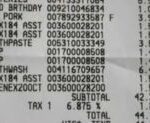The other day I was talking to a client about a loan they were considering and they asked my opinion on which option they should choose. One loan had a higher interest rate but a more extended amortization period that kept their monthly payments down and a higher loan-to-value, meaning that they needed to put less skin in the game in the form of a down payment. The other loan option had a lower interest rate, but a shorter amortization period making their monthly payments higher, and it had a lower loan-to-value, meaning that my client needed to put more money down to get the loan. Given that this was a startup, and the lender knew they were short of startup capital, I told them this was a classic example of a Hobson’s Choice.
Hobson’s Choice is the concept of offering a limited or illusory choice that can be strategically employed in various business scenarios to guide a prospect’s decision-making. Although not suitable for every situation, this persuasive technique can influence a prospect to choose a specific option while maintaining a perception of choice.
Businesses often utilize Hobson’s Choice through strategies such as product bundling, limited-time offers, upgrade incentives, tiered pricing, and pre-selected options. By employing these techniques ethically and transparently, businesses can nudge prospects toward preferred choices while ensuring that the options provided genuinely meet their needs. Balancing the art of persuasion with prospect satisfaction is critical to effectively utilizing Hobson’s Choice as a strategic tool in business.
Thomas Hobson lived during the 17th century and was a stable owner who rented horses. Hobson’s stable consisted of about 40 horses. When a villager entered the stable to rent a horse, it appeared that they would have their choice of mounts. However, Hobson knew that his customers would always choose the best horses, leading to the horses being overused. So, upon entering the stable, he told his prospects they could select the horse in the first stall closest to the door or none at all. While the villager seemed to have many choices, Hobson was actually directing them to the choice he wanted them to make. Today, that parable is known as Hobson’s Choice.
When to Use Hobson’s Choice
Though not suitable for all business scenarios, Hobson’s Choice can be effectively employed in certain situations to influence decision-making. Here are a few common ways Hobson’s Choice can be used in business:
- Product Bundling: Offer prospects a bundled package where they can choose between a higher-priced bundle that includes additional features or a lower-priced bundle with fewer features. This technique guides prospects towards the higher-priced option while still providing a sense of choice.
- Limited-time Offers: Create a sense of urgency and scarcity by presenting prospects with a limited-time offer. By emphasizing that the offer is only available for a short period, you can encourage prospects to make a decision quickly and choose the proposed option.
- Upgrade Incentives: Present prospects with an upgrade option by highlighting the enhanced benefits and features they would receive by upgrading. By emphasizing the added value of the upgrade, you can guide prospects toward choosing the higher-priced option.
- Tiered Pricing: Offer prospects different price tiers with different levels of service or benefits. By positioning the higher-priced tier as the most comprehensive and advantageous option, you can guide prospects toward selecting it while still providing alternative choices.
- Pre-selected Options: Simplify the decision-making process by pre-selecting an option for the prospect that aligns with their preferences or needs. This approach reduces the cognitive load for prospects and nudges them towards the recommended choice while still giving them the freedom to make adjustments if desired.
When NOT to Use Hobson’s Choice
Hobson’s Choice may not be a good idea in the following situations:
- Lack of Genuine Options: If you don’t have distinct and meaningful choices to offer, using Hobson’s Choice can come across as deceptive or manipulative. Prospects may feel misled or distrustful if they realize they have been presented with a false sense of choice.
- Ethical Concerns: If the options presented do not align with the prospect’s best interests or are designed solely to benefit the seller, it is not ethical to utilize Hobson’s Choice. Maintaining transparency, honesty, and integrity in sales interactions is crucial for building long-term relationships with prospects.
- Complex or High-stakes Decisions: In situations where prospects are making complex or important decisions that require careful consideration, Hobson’s Choice can be perceived as pressuring or limiting their ability to explore other alternatives. Prospects may feel rushed or coerced, leading to dissatisfaction or regret later on.
- Long-term Prospect Relationships: If your goal is to establish trust and foster long-term relationships with prospects, relying on Hobson’s Choice as a sales technique may not be advisable. Over time, prospects may become aware of the manipulation and feel their choices have been undermined, potentially leading to a breakdown in trust and loyalty.
- Negative Reputation and Prospect Backlash: In an era of online reviews and social media, using Hobson’s Choice can result in negative feedback and damage your reputation. Prospects who feel deceived or coerced may share their negative experiences, harming your business.
Evaluating the specific context and considering the ethical implications before employing Hobson’s Choice as a sales technique is important. Honesty, transparency, and prospect-centricity should always be a priority to build trust and foster positive relationships with prospects.
How to Use Hobson’s Choice
Hobson’s Choice is often used as a persuasive technique to influence a prospect’s decision during sales situations. By presenting a seemingly extensive range of options, a salesperson can guide prospects toward a predetermined outcome while appearing impartial and maintaining the illusion of choice. This technique exploits the psychological principle of decision-making known as “choice architecture” and can be particularly effective when prospects perceive that they are in control of their decisions.
To utilize Hobson’s Choice, a salesperson often presents two or three options, one of which, usually the last, is significantly more appealing or beneficial than the others. Strategically, positioning the preferred option leads prospects toward the desired outcome. By emphasizing the advantages and benefits of the favored choice while downplaying or presenting the disadvantages of the alternatives, the salesperson can influence the prospect to select the option the salesperson desires.
Services Example
Let’s say you operate a consulting company specializing in digital marketing strategies. During a sales meeting with a potential client, you could present them with two consulting packages:
“Basic Marketing Strategy Package” Price: $2,000 per month
- Brief market overview
- Generic marketing plan template
- Limited competitor analysis
- Bi-monthly progress reports
- Limited support and consultation
“Comprehensive Marketing Strategy Package” Price: $5,000 per month
- Extensive market research and analysis
- Customized marketing plan tailored to their business
- In-depth competitor analysis
- Monthly progress reports and strategy adjustments
- Unlimited ongoing support and consultation
Presenting these two options creates the perception of choice while strategically guiding the client toward the desired outcome. The Basic Marketing Strategy Package appears much less appealing due to its limited features and lower level of support. In contrast, the Comprehensive Marketing Strategy Package is designed to be far more thorough, offering far greater value and potential success for the client’s business.
During the presentation, you would point out the limitations of the Basic Marketing Strategy Package, emphasizing that it may not deliver the results the prospect expects due to its generic nature and reduced support. The salesperson would then emphasize the advantages of the Comprehensive Marketing Strategy Package, highlighting how it provides a much more tailored and detailed marketing strategy to help the client achieve their goals much more effectively.
By using Hobson’s Choice in this way, you position the Comprehensive Marketing Strategy Package as the preferred and more advantageous choice. However, ensuring that both options genuinely provide value and meet the client’s needs is crucial. This approach allows prospects to feel empowered in their decision-making while guiding them toward the more beneficial option for their business.
Product Sales Example
Now let’s suppose you own a retail flower shop and want to use Hobson’s Choice to drive the prospect to one of your higher-priced offerings. During a conversation with the prospect, you could present them with two options for purchasing flowers:
“Ready-Made Bouquet” Price: $50
- Pre-designed bouquet from a selection of popular arrangements
- Standard flower selection
- No consultation required
- Customer pick-up only
“Customized Floral Arrangement” Price: $100
- A personalized consultation with a floral designer
- Custom arrangements based on the customer’s preferences and the occasion
- Premium flowers and unique designs
- Delivery service included
By offering these two options, you again create the perception of choice while guiding the prospect toward the desired outcome. The Ready-Made Bouquet is presented as a very basic alternative demonstrating that little thought went into the selection. You would briefly mention that the Ready-Made Bouquet provides a convenient ready-made option for those who prefer simplicity but without the same level of customization. However, in contrast, the Customized Floral Arrangement is positioned as the much more thoughtful choice, offering personalized attention, high-quality flowers, and the convenience of delivery. You would highlight the advantages of the Customized Floral Arrangement, emphasizing how it allows the prospect to have a unique and tailor-made floral arrangement for their specific needs.
By using Hobson’s Choice, you encourage prospects to consider the more comprehensive and higher-priced option while respecting their freedom of choice.
While Hobson’s Choice can be effective in some sales scenarios, it is essential to exercise ethical considerations. Transparency and honesty are crucial to maintaining trust with prospects. A salesperson should ensure that the presented options align with the prospect’s needs and provides value rather than merely manipulating choices to favor their interests.
Conclusion
In conclusion, Hobson’s Choice is a persuasive technique that involves presenting prospects with a limited or illusory choice while guiding them toward a preferred option. Various business scenarios can employ Hobson’s Choice, such as product bundling, limited-time offers, upgrade incentives, tiered pricing, and pre-selected options. However, using Hobson’s Choice ethically and transparently, ensuring that the options presented meet the needs of prospects, is crucial. Businesses can effectively influence decision-making while maintaining trust and integrity by striking the right balance between persuasion and prospect satisfaction.
How can you use Hobson’s Choice in your next sales call?












